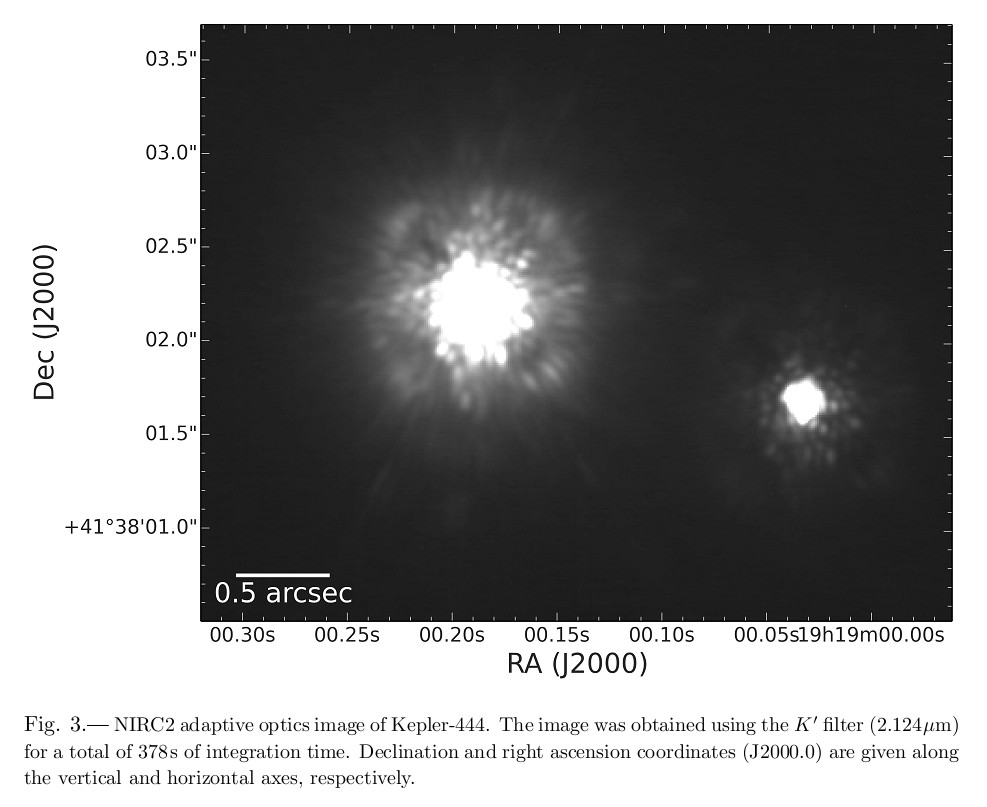Kepler-444
Kepler-444
An ancient extrasolar system with five sub-Earth-size planets
by T. L. Campante, T. Barclay, J. J. Swift, et al.
The Astrophysical Journal 799, 170. doi:10.1088/0004-637X/799/2/170, published 27 Januar 2015 (http://arxiv.org/abs/1501.06227).
Abstract
The chemical composition of stars hosting small exoplanets (with radii less than four Earth radii) appears to be more diverse than that of gas-giant hosts, which tend to be metal-rich. This implies that small, including Earth-size, planets may have readily formed at earlier epochs in the Universe's history when metals were more scarce. We report Kepler spacecraft observations of Kepler-444, a metal-poor Sun-like star from the old population of the Galactic thick disk and the host to a compact system of five transiting planets with sizes between those of Mercury and Venus. We validate this system as a true five-planet system orbiting the target star and provide a detailed characterization of its planetary and orbital parameters based on an analysis of the transit photometry. Kepler-444 is the densest star with detected solar-like oscillations. We use asteroseismology to directly measure a precise
age of 11.2+/-1.0 billion years
for the host star, indicating that Kepler-444 formed when the Universe was less than 20% of its current age and making it the oldest known system of terrestrial-size planets.
We thus show that Earth-size planets have formed throughout most of the Universe's 13.8-billion-year history, leaving open the possibility for the existence of ancient life in the Galaxy.
The age of Kepler-444 not only suggests that thick-disk stars were among the hosts to the first Galactic planets, but may also help to pinpoint the beginning of the era of planet formation.

